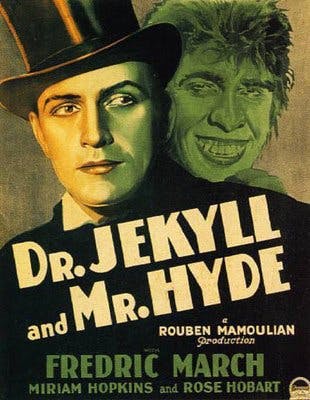Joe Smith (not his real name) is interviewing for a sales representative position with XYZ Manufacturing Company.
They ask him questions about his experience and background, and eagerness to sell. He shows enthusiasm and excitement for the job, and gives examples of successful past experiences.
Joe seems like a good fit, and he’s hired. But after a while, it becomes apparent that Joe’s not performing as he should.
He’s been given a quota of $500,000, but he’s only doing $300,000 in sales, despite the fact that he has a good territory and has undergone extensive sales training. His demeanor is relaxed and laid back, and he shows little passion or motivation.
What went wrong?
Bad hires = tons of hidden costs
I call it: “You interviewed Dr. Jekyll, but hired Mr. Hyde.”
The interviewee acted enthusiastic and excited, and gave examples of how he was successful, but he was playing the role of a passionate, energetic sales person like an actor in a play. This happens over and over at companies. Why? Because they hire the person who does the best interviewing — which I equate to acting — not the person who’s the best fit.
According to a 2012 article in Forbes titled, Hire for Attitude: An Interview with Mark Murphy, 46 percent of new hires fail within 18 months.
Bad hires create a myriad of hidden costs: Damaged relations with customers, lost business opportunities, high turnover rate with good employees, increased stress, time loss, and legal issues. Most studies say the average cost of a bad hire is 50-300 percent of a person’s salary depending on the specific position and level within the company.
One of the main reasons for this is that employers don’t know how to identify a person’s innate characteristics.
Identifying innate characteristics
Innate characteristics include traits such as assertiveness, extroversion, and detail orientation. These characteristics remain stable throughout a person’s life regardless of time and circumstances.
Non-innate characteristics can change with time and circumstances, and thus have far less ability to predict fit and behavior. Non-innate characteristics include attitudes, values, energy level and personal interests. These traits are important, but can change. They’re also easier to determine with good interview questions.
Unfortunately, interviews alone don’t identify innate characteristics. A high-quality, scientific-based assessment does, and can reduce employee turnover from 75 percent to 25-50 percent.
In an Inc. article titled, How to Hire Great People – Every Time, Les McKeown points out that managers should treat the hiring process “as the most important strategic planning your company needs.” The reason: Every new employee can either make or break a company. Managers need to hire employees who will help the company grow and become more profitable, not bring it down.
5 tips for hiring great people
McKeown listed four (4) tips. I’ve added some of my own thoughts and an additional fifth tip for hiring great people:
- Don’t ask crazy interview questions, like this one: “If you were a box of cereal, what would you be and why?” asked in an interview for a Bed Bath & Beyond sales associate. Google used to ask brainteaser interview questions. But last year, the company said they were no longer using them. “They don’t predict anything,” Google exec Laszlo Bock told The New York Times in June 2013. “They serve primarily to make the interviewer feel smart… Instead, what works well are structured behavioral interviews, where you have a consistent rubric for how you assess people, rather than having each interviewer just make stuff up.”
- Clearly define what it takes to be successful in the position. This includes identifying innate characteristics as well as experience, attitude, and values. Too often employers focus on job responsibilities or qualifications, not whether someone has the ability to do the job from the start. It’s important to focus on a person’s ability to do a particular job, since innate ability does not improve over time.
- Include an objective, science-based assessment to measure innate characteristics before engaging in the interview process. The interview process is inherently subjective; we’re human, and tend to hire people that we feel good about. Therefore, it is next to impossible to determine what someone is really like from interviews alone. Don’t waste your and the candidate’s time and effort when you have objective evidence that a person cannot succeed in your job and environment.
- Include others in the hiring process. Whether you’re working with a recruiter or not, it’s important to include all the people who will be interacting with the job candidate.
- There are literally hundreds of assessment tools, but many are outdated and focus on non-innate characteristics, which change over time. A great source of simple, practical and unbiased information that can help you make a wise decision can be found here.
Bad hiring can set a company back in many ways and result in financial and legal challenges. Using tools to find the right hire, on the other hand, can reduce employee turnover, putting your company on the path to growth and success.
